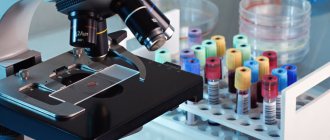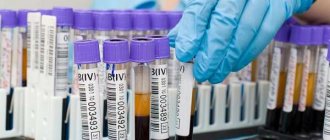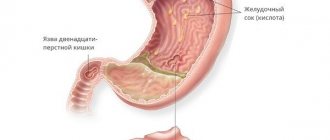In this article we will look at the symptoms and treatment of boils. This is a skin disease that is characterized by acute purulent and necrotic inflammation of the hair follicles and surrounding connective tissues. The main cause of a boil is a bacterial infection, mainly in the form of Staphylococcus aureus; less often, its white subspecies is the culprit. Furunculosis is a widespread, recurring and chronic disease. We will talk further about the causes and how boils are treated.
General information
The location of the boil can be located anywhere, with the exception of the soles of the feet and palms, but most often the boil forms on the back of the head, and also in the area of the forearms, lower back, buttocks, abdomen or lower extremities. Boils in the ears, on the face, and those that appear on the genitals are especially painful.
The prognosis for boils is usually positive, but there are still complications with this disease. Complications may occur in the form of thrombosis, lymphadenitis or sepsis, so the formation of boils is considered a fairly serious pathology. Boils have a certain seasonality. Most often they form in spring and also in autumn. In addition, doctors note that boils often form in men, but in children, on the contrary, they are rare.
The symptoms and treatment of boils are presented below.
Symptoms of the disease
The first and most obvious symptoms for small formations are swelling, redness, itching, and pain. In this case, you can try to get rid of them yourself. Under what circumstances will you need a doctor's help? Try to pay attention to the following processes: - if the head of the boil has not formed; - no positive results have occurred for several days; - high content of pus in the growth; - the formation is quite painful; - the appearance of a boil in the face, spine, rectal area; - unpleasant pain interferes with movements; - significant increase in temperature; - red stripes have formed that take on the appearance of lines from a boil. This process is called lymphangitis; - in a short time, headaches, fever, malaise, and the formation of a large number of boils begin to manifest themselves.
Complications with this disease occur very often. The infection can get into the middle of the human body, after which inflammatory processes begin not only in the internal organs, but also on their membranes, which leads to purulent meningitis. Do not forget that staphylococci are quite persistent microorganisms; they can easily adapt to a variety of antibacterial substances and live in the body without showing themselves in any way.
The appearance of a boil
The development of boils can begin primarily on a healthy area of the skin, and also secondarily when the pathology occurs against the background of other pathological conditions and diseases of the body, for example, with staphyloderma. The development of boils usually occurs in three stages, the duration of which, in the absence of additional complications, is up to ten days.
The boil at the first stage is characterized by the appearance of inflammation, in which a hard red compaction with unclear boundaries appears in this place. At the site of inflammation, pain and tingling may be felt. As the formation grows, this seal increases in size, in addition, it expands, and the surrounding tissues noticeably swell. Treatment of a boil (pictured) should begin at this stage.
In the second stage, which usually occurs on the third day, it is characterized by expansion to two centimeters in diameter. A necrotic core forms in the center of the compaction, and a pustule appears on the surface. Not only the follicle, but also the sweat gland and connective tissue are involved in the process of suppuration. At the same time, the vessels around it dilate significantly, and collagen swelling may be observed. The actual shape of the formation takes on a cone-like shape. Collagen and elastic fibers inside it are destroyed. Collagenized bundles form a thick ring inside the boil, which prevents the release of infectious purulent formations into the body. This prevents further infection. In this regard, it is very important not to squeeze out the boil, as this can provoke undesirable consequences. Opening must be done correctly. Treatment of boils on the body should be carried out under the supervision of a doctor.
Further, the skin in the area of inflammation becomes smooth and bluish, and the pain intensifies. In the case of extensive damage to the body by this infection (when there are many boils), a person may feel symptoms of intoxication, which will be expressed as a general malaise. You may also experience weakness, nausea, lack of appetite, headaches and fever up to thirty-eight degrees.
The second stage ends with a spontaneous or artificial version of the opening of the pustule, as a result of which all the contents are released out. The contents of such a pustule usually consist of a yellow necrotic core with a purulent component and blood.
A boil at the third stage can be characterized by the appearance of an abscess in the area of opening, which is first filled with granulations, and after a couple of days a scarring process occurs in this place. The scar is initially red when healing, but then it turns white, becoming almost invisible. The entire cycle of the disease may have an erased character, for example, such a process sometimes occurs only with the formation of an infiltrate without the appearance of pus and necrosis. In other situations, a boil with weakened immunity and other diseases acquires an abscess or phlegmonous character.
The causes and treatment of boils are of interest to many.
Therapeutic methods
There can be various reasons for the appearance of a boil. Boils are treated with general and local remedies. For the treatment of mature chiryaks, drugs that have an antimicrobial effect are usually used. They treat the necrotic area, as well as the surrounding area.
A compress of ichthyol is applied to the purulent abscess twice a day. You need to put some dry heat on top of it (a heating pad or a bag of heated salt). This method is used to increase the rate of development of the abscess.
Ultraviolet radiation can also be used in small doses. Together with ultraviolet light, Novocain with antibiotics is injected around the abscess. Such methods are used only in a hospital setting (preferably under 24-hour medical supervision).
The inflamed area of the skin needs to be left at rest. For the limbs, plaster splints are used. If a positive result is not observed, then such measures should be carried out daily until complete relief. Silver nitrate is also often used for compresses. In the early development of a boil, such measures usually lead to a quick cure. In parallel, you can use ointments: Dimexide, Bioprin and the like.
To speed up the drying of the affected area, an “ichthyol cake” is used. It washes off quite easily with water. Dressings must be done twice a day.
Surgical treatment of boils is carried out only in cases of prolonged illness. The abscess is cut under anesthesia (usually local). In addition to the usual incision, complete removal of the affected area can be used. In this case, there is a need for sutures.
Reasons for appearance
The main cause of boils is an infection that is bacterial in nature, mainly Staphylococcus aureus. This infection is always present on the surface of the skin of people, but due to immunity, in addition, with the normal functioning of other organs, and also provided that there are no violations of tissue integrity, staphylococcus can in no way harm health. It is important to emphasize that a weakened immune system is the main cause of the formation of various pathologies. Thus, the development of boils occurs when two conditions are combined: the presence of infection along with pathological factors, which can be external or internal. External causes of boils include the following factors:
- Presence of skin contaminants.
- The appearance of skin defects in the form of microtraumas, cracks, cuts (especially during shaving), scratching with nails, rubbing with uncomfortable clothes, as well as shoes, etc.
- Regular poor quality nutrition of the body.
- Hypothermia or, conversely, overheating of the body.
- The body's exposure to constant stress.
The internal causes of boils include the following factors:
- Having reduced immunity.
- Development of increased sweating.
- Impaired metabolism.
- Abuse of bad habits such as alcohol and smoking.
- The presence of anemia, otolaryngological diseases and vitamin deficiency, along with problems of the endocrine and digestive systems, may also affect the appearance of boils.
Symptoms of pathology
The main symptom of a boil is the formation of a red lump in the area of inflammation, which has a diameter of up to three centimeters. Over time, a pustule appears on the surface of such a formation. Inside there is a purulent core, sometimes mixed with blood. In some cases, boils are treated only by the formation of reddened infiltrates. Other symptoms include a feeling of soreness and tingling in the inflamed area, along with significant swelling of the surrounding tissue. If you have a weakened immune system, you may experience general malaise along with increased fatigue, drowsiness, loss of appetite, nausea, fever and headache.
After the necrotic tissue is sloughed off, healing occurs through scarring. Often, boils appear on the skin of the neck, and also on the back of the head, face, back or thighs. The occurrence of boils is called furunculosis. In medicine, necrotic inflammations of the skin are usually called carbuncles. In case of improper treatment of a boil on the face, a serious complication in the form of purulent meningitis or sepsis is likely to occur.
Complications caused by furunculosis
If the boil was treated at home or not treated at all, the following diseases may occur:
- lymphadenitis (inflammation of the lymph nodes located next to the chiria),
- lymphangitis (inflammation of the lymphatic vessels located next to the chiria),
- sepsis (blood poisoning)
- arthritis (inflammation of the joints)
- pyelonephritis and other kidney inflammations,
- meningitis, meningoencephalitis, encephalitis and other inflammations of brain tissue.
Complications can be avoided by consulting a doctor in a timely manner and following all his instructions.
Sepsis, the most dangerous complication of furunculosis
Kinds
Boils are classified according to the course of the disease and their origin:
- Along the way, the disease can occur in an acute form, which is a classic development of a boil. There is also chronic furunculosis, which is characterized by a large number of manifestations. In this case, there can be quite a lot of boils, each of which will be at a certain stage of its development.
- Directly by origin, a primary form is distinguished, in which the development of pathology occurs against the background of a violation of the integrity of the skin along with the penetration of infection into this area. And a secondary form of pathology is possible, when development occurs with existing skin diseases, for example, with eczema or staphyloderma.
Is traditional treatment for boils effective? More on this later.
Diagnosis of pathology
Diagnosing boils involves the following procedures:
- A doctor performs a visual examination.
- Collection of anamnesis of the disease.
- Carrying out dermatoscopy along with bacteriological culture of the contents of the boil.
As part of additional diagnostic methods, the following procedures are performed:
- Taking blood and urine tests, performing bacteriological cultures, and so on.
- Carrying out pharyngoscopy, rhinoscopy and radiography of the sinuses.
- Performing fluorographic and ultrasound examinations.
- Carrying out computer and magnetic resonance imaging of the brain.
Next, we will find out how this pathology is treated.
Treatment of boils
Treatment of such a phenomenon as a boil primarily depends on the stage of the inflammation process. At the first stage, ultraviolet irradiation is used during the infiltration period. On the second, in order to stop the infection, and in addition, for pain relief, a blockade is placed. As part of the blockade, the boil is pricked around its circumference with special antibacterial solutions and novocaine. The injection is carried out in the surgical department. Among the most used antibiotics intended for the treatment of boils are drugs in the form of Amoxicillin, Methicillin, Oxacillin, Cephalexin and Erythromycin. The antibiotic is selected based on diagnosis, as well as depending on the body’s resistance to infections.
Along with antibacterial treatment of boils in intimate places in women, sulfonamides are often prescribed. In order to avoid an allergic reaction due to the use of antibiotics, antihistamines are prescribed in the form of Diphenhydramine, Pipolfen and Suprastin. The effectiveness of the blockade with the standard course of the boil is usually characterized by a quick recovery.
In order not to damage the inflamed area, a removable plaster splint is applied to the boil. This helps prevent the risk of rupture of the protective ring that contains the pus. If the blockade is not effective, and the inflammatory process with pain only intensifies, it is repeated a day later and so on every day until the boil opens and the pus flows out. In this case, a bandage with a one percent solution of silver nitrate is applied to the inflamed area; it must be changed daily.
Ichthyol is a very effective means of pain relief, and at the same time disinfection and elimination of the inflammatory process as part of the treatment of boils in intimate places. A hair is removed from the central area of the boil, and then a thick layer of ichthyol ointment is applied to the sore spot, onto which loosened cotton wool is applied. After it dries, a so-called “ichthyol cake” is formed, which is easily washed off with warm water. Such dressings should be done twice a day. But it should be noted that such lotions cannot be used on opened boils, as they can interfere with the normal discharge of purulent contents.
What else does the treatment of boils in intimate places involve? After opening, their cavity should be washed with a three percent solution of hydrogen peroxide, then a bandage with a sodium chloride solution is applied, this allows the damaged area to be cleaned of necrotic masses. The purulent core of the boil is removed only after its direct separation from the surrounding tissues.
It is extremely important to remember that boils should not be opened by squeezing, as there is a very high probability of breaking the protective ring. After this, the infection can spread throughout the body, which will cause a number of serious and at the same time dangerous complications for the health of the body.
At the third stage, during healing after removing the purulent mass, the skin around the boils should be treated with alcohol, brilliant green is also suitable. What ointment should I use to treat a boil?
A bandage with Vishnevsky ointment should be applied; Levomekol is also suitable. The bandage must be changed every three days. In cases of granulation, an indifferent fatty dressing is applied, which contains fish oil along with sterile petroleum jelly and syntomycin emulsion.
Surgical treatment is carried out for complications of boils - so-called phlegmon. Surgery is also relevant in the presence of advanced forms of carbuncle, and in addition, with abscessing boils. This type of treatment for boils involves making an incision into the boil and then extracting its contents, after which the usual treatment regimen is applied. Sometimes the boil is completely excised, after which sutures are applied.
Treatment of boils is carried out until the resulting infiltrate is completely reabsorbed, otherwise the appearance of various complications cannot be ruled out. Complicated boils are treated exclusively in a hospital setting. In the presence of furunculosis, as well as other additional complications, treatment of concomitant pathologies is carried out. Additional methods for treating boils usually include:
- Physiotherapy methods in the form of ultraviolet irradiation. Infrared irradiation is also relevant.
- The diet for this pathology includes, first of all, limiting spicy and fatty foods along with spices and alcoholic beverages.
- It is equally important to prescribe vitamins with microelements, which is necessary as part of strengthening the immune system and various body systems. It is extremely important to normalize metabolic processes, which will contribute to the patient’s rapid recovery.
- Autohemotherapy becomes a very effective remedy in the presence of furunculosis.
- They also treat boils at home.
What are the causes of furunculosis?
There are many reasons for furunculosis, and most of them come from a weakened immune system and neglect of personal hygiene: constantly dirty skin, immune system failure, hypothermia, colds and infections, metabolic disorders, hyperhidrosis, excessive activity of the sebaceous glands, ingrown hairs, overwork, diabetes mellitus , intoxication of the body, chronic stress, entry of a foreign object into the body.
And other problems:
- nervous system failure
- alcoholism,
- anemia,
- hypovitaminosis,
- thyroid diseases,
- nervous disorders,
- intestinal diseases,
- exhaustion.
Whatever the cause of chiria, it must be remembered that without proper treatment it will not go away and cannot resolve on its own. Many patients are interested in how to cure furunculosis at home. Treating chiria at home with ointments and poultices will also not give the desired result, because you need to eliminate the cause of the disease, and not its external manifestations. Furunculosis does not go away without a trace - it often leads to more serious diseases.
Alcoholism, one of the problems that provokes furunculosis
Treatment of boils at home
Before using traditional methods for treating boils, you should consult your doctor. There are many different remedies among the people that help fight problems such as boils. Here are some of them:
- Using turmeric-based ointment for boils. This ointment has a pulling property. In order to prepare it, you need to take a spoon of turmeric powder and mix it with the same amount of ginger. Next add a spoonful of honey and salt. Then everything is mixed and the mixture is wrapped in gauze, after which it is applied to the boil. To increase the effectiveness of treating boils with folk remedies, you should wrap the bandage with film and secure it on top with a bandage.
- Preparation of wax ointment. You need to melt the butter in a bowl, then add a little beeswax to it, the proportion should be four to one. Then the mixture is simmered over low heat and stirred until the wax dissolves. But the mass cannot be brought to a boil. Apply warm wax ointment in the form of a compress for two days without changing.
- Use of honey. Mix a spoonful of honey with flour and then bring the resulting mixture to the consistency of clay. Next, apply a cake made from this mass to the boil, apply a bandage and hold until the abscess is opened.
What other means of treating boils are known?
- Use of aloe. Take a large aloe leaf, wash it, remove the thorns. You also need to remove the top layer of the plant peel with a knife. Apply the leaf to the boil and secure it with a bandage. This leaf needs to be changed twice a day until the boil finally matures and breaks through.
- Using plantain. The plant needs to be washed and folded in several layers, then secured with a bandage. The bandage should be changed every two hours until the abscess opens on its own.
Opened boils are treated with silver water; alcohol, hydrogen peroxide or a product called “Chlorhexidine” are also suitable for these purposes. This is necessary so that the surrounding tissues can be properly cleansed of infection. It should be noted that the above folk methods for treating boils, according to the comments that people leave on the Internet, are quite effective and help cope well with this problem. There are various reasons for the appearance of this disease, but in order to avoid the formation of such a boil on the body, first of all, you should strengthen your immunity.
Chiryak under the armpit
Most often, boils appear in the part of the body where the hairline is located. Places exposed to constant friction become risk areas for boils. Such places include the lower back, neck area, groin, armpits.
If a boil appears under your armpit, it must be regularly disinfected with an alcohol solution. The cause of the appearance is often microbes that have entered the follicle. They lead to infection of surrounding tissues and the onset of inflammation, which causes intense pain and swelling of the affected area.
The first symptom of an armpit boil is severe discomfort and constant itching. The next sign is the appearance of redness in the form of stripes, which are directed towards the location of the lymph nodes. In this case, you should immediately consult a doctor. Self-opening can lead to infection in the body.
If a boil appears, it will undoubtedly lead to an increase in the lymph nodes in this area. This leads to even more discomfort.
There is a huge variety of medications and different methods for treating boils. But they should only be prescribed by the attending physician. It is important to remember that if a boil occurs, you cannot use Vishnevsky ointment, as it can lead to an increase in the growth of a purulent abscess and the development of infection.












